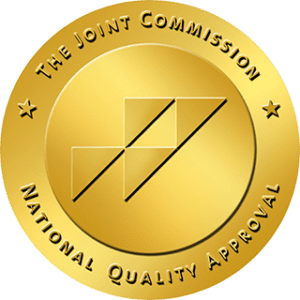Feeling nervous before a big presentation or social event is something most people experience from time to time. But for those living with social anxiety disorder (SAD), this fear is far more intense and deeply rooted in how the brain processes perceived threats. People with social anxiety worry about being judged or watched by others, making it difficult to be in social settings. The good news is that social anxiety disorder is treatable with the right therapies and medications.
At Recovery Cove, we understand that mental health conditions like social anxiety aren’t just emotional; they’re neurological, too. With this approach, we’re able to effectively treat the symptoms so that individuals can manage their condition and interact with others in a more comfortable way. Let’s take a closer look at how social anxiety affects the brain and why understanding this connection is crucial to treatment.
What Is Social Anxiety Disorder?
Social anxiety disorder, also known as social phobia, is a mental health condition that makes it difficult to be with others because of an intense fear of being judged, rejected, or humiliated. People with social anxiety disorder often worry about how they appear to others. They might worry about saying or doing something embarrassing, leading them to withdraw from social interactions.
You may have social anxiety disorder if you:
- Have trouble meeting new people
- Avoid eye contact in group settings
- Overanalyze social interactions afterward
- Experience physical symptoms like sweating, trembling, or fast heartbeat in social situations
- Avoid situations that might trigger your anxiety, even if it means missing important opportunities
Remember, it’s normal to feel nervous in certain situations, such as before giving a presentation or meeting someone new. But when this turns into crippling anxiety that makes it difficult to function, then it moves into a disorder that requires intervention and treatment.
Areas of the Brain Affected by Social Anxiety
The Brain’s Threat Detection System
The brain is hardwired to detect danger. For someone with social anxiety, everyday social interactions, such as meeting new people, making small talk, or being observed, can trigger that threat response.
The amygdala, a part of the brain involved in processing fear and emotion, plays a major role here. Research shows that people with social anxiety tend to have an overactive amygdala, which means even neutral or non-threatening situations can be perceived as dangerous.
The Fight-or-Flight Response
When the brain senses a threat, it kicks off a cascade of reactions known as the fight-or-flight response. Hormones like cortisol and adrenaline flood the body, increasing heart rate, tensing muscles, and sharpening focus. This system is intended to protect you from true dangers. Our ancestors relied on it to keep them safe from wild animals and other risks.
In social anxiety, this response is triggered not by actual danger, but by imagined fears, like being judged, rejected, or embarrassed. Over time, this can create a pattern where social situations are consistently avoided, reinforcing the anxiety. So even though social interactions aren’t a true threat, the fight-or-flight response responds like they are.

The Brain’s Feedback Loop
One of the challenges with social anxiety is that the brain learns to anticipate anxiety before the situation even occurs. This creates a loop:
- Anticipation. You begin to worry about an upcoming interaction.
- Avoidance. You cancel, back out, or withdraw.
- Relief. Anxiety temporarily decreases.
- Reinforcement. The brain interprets avoidance as successful and continues the cycle.
This feedback loop can rewire the brain over time, strengthening anxiety pathways and making it harder to break free without professional support. This is why it’s so important not to avoid situations, as it only gives more power to the anxiety.
Long-Term Brain Effects
Chronic social anxiety can also have long-term effects on the brain. Prolonged stress impacts areas responsible for memory and concentration (hippocampus), decision-making and emotional regulation (prefrontal cortex), and sleep cycles, which are often disrupted in anxious individuals. These changes can deepen feelings of hopelessness, isolation, and low self-esteem, making it even harder to reach out for help.
The Good News: The Brain Can Heal
Thanks to a concept called neuroplasticity, the brain can change and adapt. With the right anxiety treatment, which typically includes therapy, medication, mindfulness practices, and supportive care, people with social anxiety can retrain their brains to respond differently to social cues.
Social anxiety is usually treated with:
- Cognitive behavioral therapy (CBT). CBT is the gold standard for treating social anxiety, as it helps individuals challenge negative thought patterns (e.g., “Everyone is judging me”), build healthier beliefs about social interactions, and practice real-life social skills through gradual exposure.
- Exposure therapy. This type of behavioral therapy helps individuals gradually face feared social situations in a controlled way. Over time, this helps reduce avoidance behaviors.
- Medication. In some cases, medications may be used to manage anxiety symptoms, especially if therapy alone isn’t enough. Common medications include antidepressants, anti-anxiety medications, and beta-blockers.
- Mindfulness and relaxation techniques. Practices like deep breathing, meditation, and progressive muscle relaxation can help calm the nervous system and reduce physical symptoms of anxiety.
- Support groups. Talking to others who are also living with social anxiety can be helpful and reduce feelings of loneliness and isolation.
- Lifestyle support. It’s also important to maintain a healthy lifestyle with regular exercise, restful sleep, healthy meals, and limited caffeine and alcohol.
Are You Living with Social Anxiety? Let’s Rewire Your Story.
At Recovery Cove, we help individuals understand the root of their anxiety and build tools to reduce fear, manage symptoms, and reconnect with life. You don’t have to live in fear of being seen or heard. Healing is possible, and we’re here to help.
Our recovery center offers comprehensive mental health treatment services that include therapy, mindfulness practices, support groups, and lifestyle support. Your treatment plan will be tailored to your needs, and it can also address other co-occurring disorders you may be dealing with as well, such as panic disorder, generalized anxiety, or bipolar disorder. By treating both conditions at the same time, you will see results sooner.
To learn more about our social anxiety treatment program, contact Recovery Cove at 484-549-COVE. Our team is ready to support your mental health journey.






